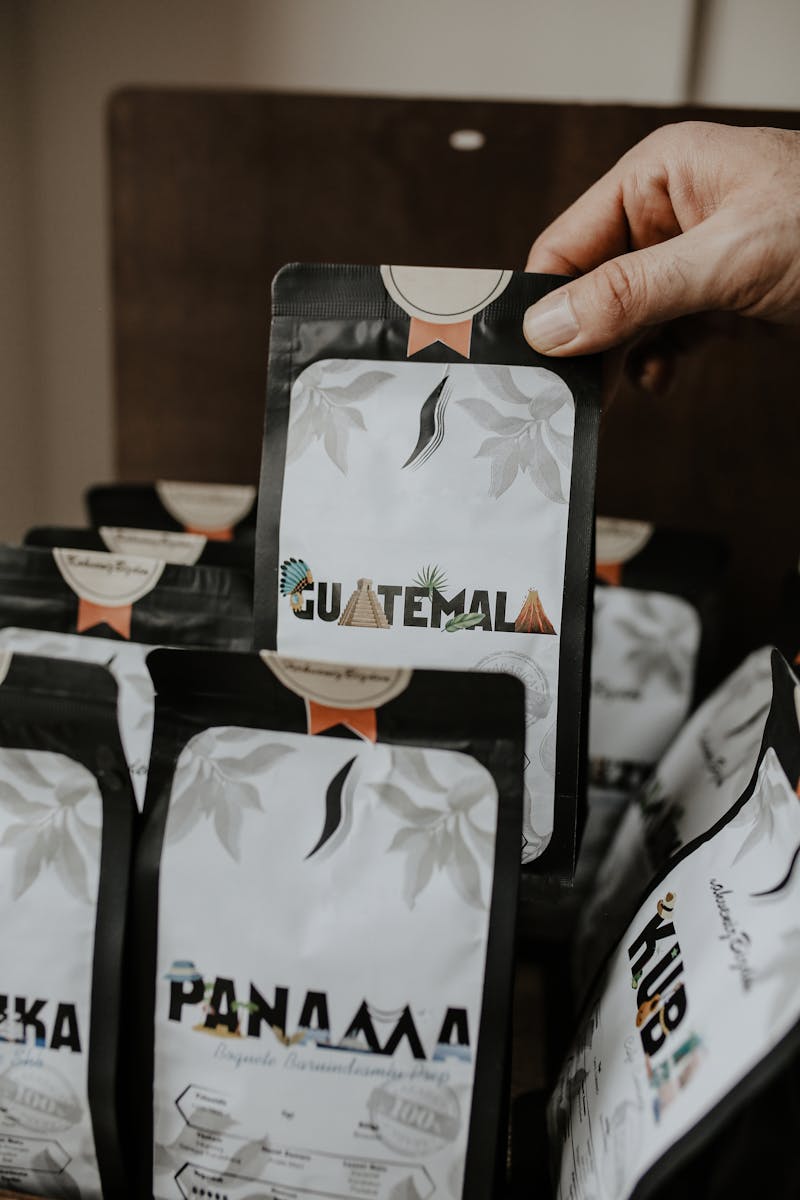History, Flavor, and What Makes It a Coffee Lover’s Favorite
Imagine the first sip of Guatemalan Antigua coffee—bright, rich, and unmistakably smooth.
It’s not just another brew; it’s a cup that tells a story from its volcanic soil origins to your kitchen table.
Known for its balanced body, hints of cocoa, citrus, and a lively finish, this coffee earns its status as a favorite among enthusiasts everywhere.
For years, people from all walks of life have sought out Guatemalan Antigua coffee for its unique flavor.
Coffee shops, home brewers, and specialty roasters celebrate its legendary character. As you trace its journey from the lush Antigua Valley, you’ll see why so many consider it a true classic in the world of specialty coffee.
If you enjoy learning about coffee’s rich diversity, check out our guide to different brewing methods and how they impact flavor.
The Origins of Guatemalan Antigua Coffee
Guatemalan Antigua coffee is more than just a regional label on a bag; it’s a legacy that starts centuries back.
Its journey is shaped by both the traditions of local growers and the unique land around the old city of Antigua.
The story behind every bean is a testament to how history, geography, and culture come together to deliver a taste that stands out from the crowd.
Historical Roots in Guatemala
The roots of coffee in Antigua run deep. The city itself, wrapped by three mighty volcanoes—Agua, Fuego, and Acatenango—became a center for coffee cultivation in the 18th century.
When the Spanish introduced coffee plants to Guatemala, the region’s ideal climate and fertile volcanic soil made it a natural match.
Antigua’s cobblestone streets and colonial-era fincas are a window into its coffee legacy. Some farms here have belonged to the same families for generations.
They’ve passed down not only their land, but also the knowledge of when to plant, when to harvest, and how to coax the richest flavors from every crop.
The significance of Guatemalan coffee stretches beyond Antigua. Coffee growing reshaped Guatemala’s economy, bringing communities together and helping the country gain recognition on the world stage.
To explore how coffee intertwined with national identity, check out this history of coffee in Guatemala.
You’ll still find locals sipping Antigua coffee in bustling markets or quiet plazas, savoring the same flavors that made it famous centuries ago.
Each cup is a living tradition—a link between the past and today’s coffee enthusiasts.
Growing Conditions and Harvesting
 Photo by cottonbro studio
Photo by cottonbro studio
Antigua’s landscape tells a big part of its coffee story. Volcanic ash enriches the soil, packing every coffee plant with nutrients that help develop those signature chocolate and citrus notes.
The farms often sit between 4,600 and 5,600 feet above sea level, a height that lets the beans ripen slowly for maximum flavor.
Let’s break down why these conditions matter:
- Rich Volcanic Soil: The nutrient-loaded earth helps create dense, flavorful beans.
- Altitude: Higher elevations slow the maturity of the coffee cherry, leading to complex flavors and balanced acidity.
- Climate: Antigua’s days are warm, but the nights cool off. This balance preserves sweetness and prevents over-ripening.
Producers in Antigua take pride in sustainable practices, many tending shade-grown coffee that supports bird habitats and local biodiversity.
Hand-picking is common, ensuring only the ripest cherries make it through to processing.
Recent years have seen a strong movement toward organic farming and ethical practices—vital for both the health of the land and the people who work it.
For a closer look at the science behind these growing conditions, you might like this deep dive into Antigua’s coffee region climate and altitude.
Growing and harvesting Guatemalan Antigua coffee is a careful collaboration between people and place.
The result is a brew celebrated not just in Guatemala, but by coffee lovers across the globe.
To learn more about how these beans stack up next to other renowned varieties, check out our post on comparing Central American coffees.
Distinctive Flavor Profile and Cupping Notes
When it comes to a truly memorable cup, Guatemalan Antigua coffee stands out with a personality as rich as its volcanic origins.
Its signature taste has won over baristas, home brewers, and anyone who enjoys savoring every sip.
To make the most of this iconic brew, it’s worth taking a closer look at what sets the flavor apart and how you can bring out its best at home.
Tasting Experience: What Sets It Apart
Guatemalan Antigua coffee offers an inviting sensory journey from the moment you open the bag.
The aroma alone hints at a world of flavor, but the cupping experience delivers even more depth.
- Aroma: Expect a fragrant blend of cocoa, sweet spices, and a touch of citrus. There’s a richness in the scent that promises something special.
- Body: This coffee is known for a smooth, velvety texture that feels full but never heavy. Each sip has a pleasant weight that clings to your taste buds.
- Acidity: Antigua beans are celebrated for their lively, balanced acidity. You’ll likely notice a crisp, tart sensation similar to green apple or lemon—refreshing but not overpowering.
- Flavor Notes: Classic Antigua features chocolate, caramel, and citrus, with layers of soft spice and even subtle hints of smoky rum or toffee, depending on the roast. These notes often linger, evolving as the cup cools.
- Aftertaste: After each swallow, there’s a lingering hint of cocoa or sweet spices that keeps you coming back for another sip.
If you want to compare your tasting notes or get some professional cupping insight, check out this in-depth profile of Guatemalan Antigua coffee.
You’ll see why so many coffee lovers call this one of their favorites for daily sipping or sharing with friends.
Brewing Tips for the Perfect Cup
To showcase the full spectrum of flavors in Guatemalan Antigua coffee, the brewing method you choose makes all the difference.
Certain methods do a better job of highlighting key notes like acidity, body, and sweetness.
Here are some tried-and-true approaches that bring out Antigua’s best qualities:
- Pour-Over: This slow, steady method is a top choice for Antigua beans. The gentle extraction highlights the crisp acidity and lets those chocolate and citrus notes shine. Aim for a medium grind and water temperature around 200°F.
- French Press: For a bolder, richer body and more pronounced sweetness, the French press delivers. Use a coarser grind and steep for about four minutes to capture the signature velvety feel.
- Drip Coffee: If you’re looking for convenience without sacrificing flavor, quality drip brewers will also bring out Antigua’s character. Opt for freshly ground beans right before brewing.
A good practice no matter the method:
- Always use filtered water.
- Measure your coffee and water carefully for balanced extraction.
- Brew fresh, and enjoy your cup soon after for peak aroma and taste.
Want more brewing advice tailored to Guatemala’s coffees? Learn more with this helpful guide on pour-over and other best brewing methods for Guatemalan coffee.
Brewing Antigua beans is an easy way to elevate your home coffee game.
If you want more ideas for getting the most from each cup, explore our tips for making coffee at home taste exceptional.
Get ready to enjoy Guatemalan Antigua in all its flavorful glory.
Why Coffee Lovers Choose Guatemalan Antigua
Guatemalan Antigua coffee captures the imagination of coffee lovers everywhere. Its reputation has grown thanks to its signature flavor, rich history, and a story that begins in the shadow of volcanoes.
What draws such a diverse group of fans to Antigua’s beans?
The answer is as complex as the cup itself, blending taste, status, traceability, and even well-being.
Who Drinks It and Why
The fanbase for Guatemalan Antigua coffee stretches from everyday coffee drinkers to seasoned professionals.
Each group finds something to love in this storied brew.
 Photo by C’Pho Ngondo R.Rouge
Photo by C’Pho Ngondo R.Rouge
Let’s break down who’s reaching for these beans and why:
- Casual Coffee Lovers crave the chocolate-citrus combination that makes every sip interesting. For them, Antigua offers a more memorable experience than standard blends.
- Coffee Enthusiasts choose single-origin coffees like Antigua for their uniqueness and the way flavor tells the story of a place.
- Expert Baristas and Specialty Roasters build their brands on guest-favorite coffees. Antigua’s balance and prestige earn it a regular spot on many café menus.
Fans are motivated by several factors beyond taste:
- Flavor Adventure: The complex yet balanced notes make Guatemalan Antigua coffee a go-to for those seeking something truly special.
- Prestige: Serving or ordering Antigua signals sophistication and an appreciation for quality.
- Traceability: Knowing the exact region and even the farm where the beans grew is important for ethical and flavor-conscious drinkers. Antigua beans come from a defined area, supporting both transparency and local farmers.
- Ethical Sourcing: Many producers in Antigua prioritize sustainable practices, which appeals to buyers who care about their impact on communities and the environment.
In Guatemala, coffee is more than a drink—it’s woven into daily life and community. It’s common to see friends gather over a cup as part of social and family traditions.
This deep connection elevates every cup, whether brewed in a bustling city or a quiet kitchen.
You can read more about how Guatemalan coffee shapes both local and global coffee culture in this article about Guatemalan coffee’s place in daily culture.
Health and Enjoyment
People often talk about how Guatemalan Antigua coffee is good for the soul—but does it offer more tangible benefits?
Studies and tradition both suggest that single-origin coffees can provide real perks beyond enjoyment.
- Purity and Quality: Single-origin beans like Antigua are less likely to have additives or fillers. This assures drinkers they’re getting pure coffee.
- Natural Nutrients: Because Antigua beans are grown in rich volcanic soil, they offer natural minerals and antioxidants that may support your well-being. Research suggests that nutrient-dense single-origin coffees are linked to better disease defense and wellness.
- Cleaner Energy: Many believe high-quality coffees from a single region bring smoother energy without as much of a “coffee crash,” likely due to cleaner sourcing and zero blending with lower-grade beans.
For those interested in how coffee can fit into a healthy lifestyle, our full guide covers everything from antioxidants to how brew method impacts your body.
See our advice about coffee and health.
Guatemalan Antigua coffee isn’t just about taste; it’s a choice that connects you to a community, supports ethical farming, and might even give your day a little boost.
Fans keep coming back for these reasons, making Antigua beans a treasure for anyone who loves great coffee.
Conclusion
Guatemalan Antigua coffee stands as proof that flavor and history go hand in hand.
Every cup offers a window into the careful farming, vibrant traditions, and special volcanic lands of Antigua.
Choosing this coffee means saying yes to a rich taste and a story that connects you with passionate farmers and coffee lovers worldwide.
If you haven’t tried Guatemalan Antigua, now’s the perfect time. Savor its smooth body and unique chocolate-citrus notes, and let it open the door to even more discoveries.
Want to deepen your coffee knowledge?
Explore the full journey of beans around the globe with our friendly guide to coffee origins.
Thanks for reading and sharing this cup of coffee history. Your own favorite brew might be one new origin away—keep tasting, keep exploring, and enjoy every sip.








